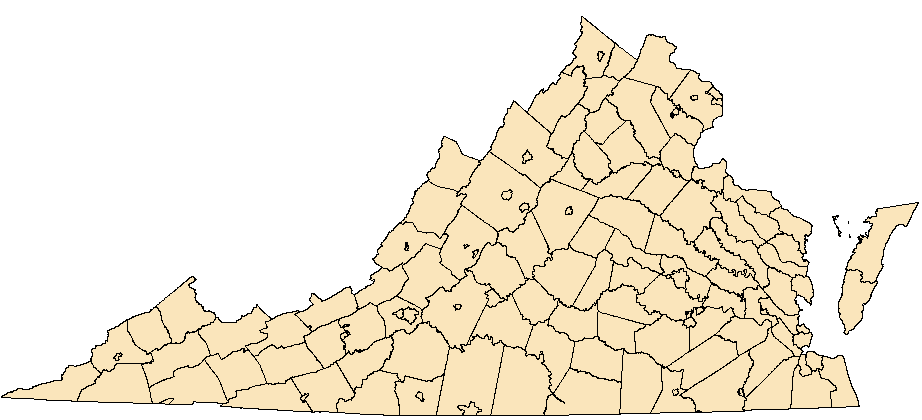Catocala herodias gerhardi Barnes and Benjamin, 1927
Pine Barrens Underwing
NatureServe Global Rank: G3T3
Virginia State Rank: S2S3
VA DGIF Tier: III
Federal Legal Status: None
Virginia Legal Status: None
Description: The wingspan of this medium-size underwing is 55-65 mm. The forewing color resembles a fine wood-grain pattern of grey and brown or black. Generally, there are no medial lines. The forewing veins are somewhat darkened in the median areas. Catocala herodias gerhardi has a distinctive very light, almost white, border along the forewing costa. The whitish costa and striated wing pattern resemble a clump of dead pitch pine Pinus rigida needles lying on sand. The hindwings are reddish-orange with black bands and white fringe.
Similar species: The typical form (C. herodias herodias) found in Texas and Oklahoma lacks the whitish costa pattern.
North American Range: From Maine south to North Carolina and west to Texas and Oklahoma. Virginia records are taken from counties along the Blue Ridge.
VA Observations by Locality: Bath | Montgomery | Highland | Montgomery | Augusta | Bath | Rockingham | Wythe









Flight season and broods: Eggs hatch in April and early May, near the time when new growth of the host plant begins to expand. Adults fly in July and August.
Habitat and Food Plants: Found almost exclusively in pitch pine-bear oak barrens or sparse woodland. Food plants are Scrub or bear oak (Quercus ilicifolia) and Northern red oak (Quercus rubra). The Virginia sites where this species has been found have patches of scrub oak in the area, but otherwise, mountain habitats are poorly known.
Behavior and Ecology: Larvae seem to feed mostly on bear oak (Quercus ilicifolia) and have been reared on blackjack oak (Quercus marilandica). Adults are rarely found in daytime, but will come to blacklights, mostly after midnight.
Population trend and potential threats: A threat for this species are excessively frequent light winter prescribed burns that destroy habitat. The fires reduce the bear oak to weak sprouts because the tree canopy is unaffected and shades out the understory.
Management practices: Both lack of fire and frequent winter burns are detrimental to this species.
References: Covell, Charles V. Covell, Jr.; A Field Guide to Moths of Eastern North America; Houghton Mifflin Co., Boston. P. 1984. P. 311.
Moth Photographers Group at the Mississippi Entomological Museum at Mississippi State University. Web application at: http://mothphotographersgroup.msstate.edu/large_map.php?hodges=8850 Accessed: 13Apr2013
Oehlke, B. 2010. Catocala website accessed at: www.silkmoths.bizland.com/catherodias.htm on 30Aug2012.
Schweitzer, D. F., M. C. Minno, and D. L. Wagner. 2011. Rare, Declining and Poorly Known Butterflies and Moths (Lepidoptera) of Forests and Woodlands in the Eastern United States. USDA Forest Service, Morgantown, WV, FHTET-2011-01. 517 pp.
Virginia Department of Conservation and Recreation, Natural Heritage Program, 600 E. Main St., 24th Floor, Richmond, VA 23219
This atlas was compiled
by the VA Natural Heritage Program with funds provided by the VA Dept. of Game and Inland Fisheries through a state wildlife grant
from U.S. Fish and Wildlife Service
Questions/Comments? Check the contacts page |
Internet Privacy Policy Statement
Last Modified: Friday, 26 February 2021, 03:21:56 PM